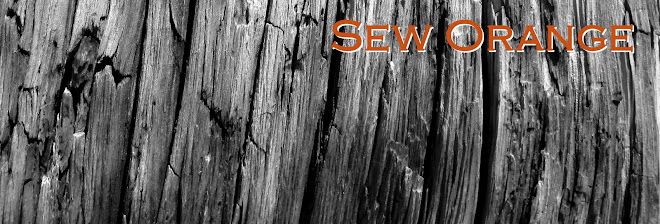I did the first one in a drab brown wool jersey from denverfabrics. I need to stop ordering fabrics from them because nearly every time I am disappointed - either it is a different thickness than I expect, the color is off, or something. I do much better from Fabric.com or obviously in person, although Sacramento isn't abounding with fabric store options. Somehow it was a different color in my head. It is however a nice thickness and quite warm. I did try the Jalie non-serger method of zig-zag stitching the edges, then stretching the fabric and doing a straight stitch. I finds the fabric gets a little stretched out with this method and doesn't lie flat. For the Jalie patterns I've found that using my 1/4" quilting foot with a straight stretch stitch to make a nice even line (can I say I *love* the 1/4" seam allowances?), followed by a zig zag using the Janome overlock foot (not sure what it should be called, but keeps the fabric in place for sewing to the edge of the fabric) works well. I seriously need a serger. Otherwise the shirts came together exactly as described in the instructions. Again I used an R and graded to a T at the hips. I had to take off nearly 2 inches total from the sleeves in the end to make them narrower, and I took a smidge off of the side bodice just below the chest to make it more fitted.
The second one is a lovely thin black knit remnant from a store in Portland. I'm not sure what it is made of - perhaps a cotton/wool blend. For the sleeves I just folded over 1/4" once and did a straight stretch stitch.
The third one, and the only one with a picture right now, is a purple wool/rayon jersey from Discount Fabrics in SF. I somehow thought I did the first one with a yard of fabric, but obviously not because it took a whole lot of jigsaw puzzle-ing to make it work! The fabric is cut at 90 degrees to the grain rather than on the grain, but it's hard to tell. Same steps as above, except had to do narrow cuffs for the sleeves (not enough fabric) and cut the back out as one piece, and I am much happier about it! Not to mention a time-saver.
Here is the front:

Here is the back. I could definitely use a swayback...


No comments:
Post a Comment